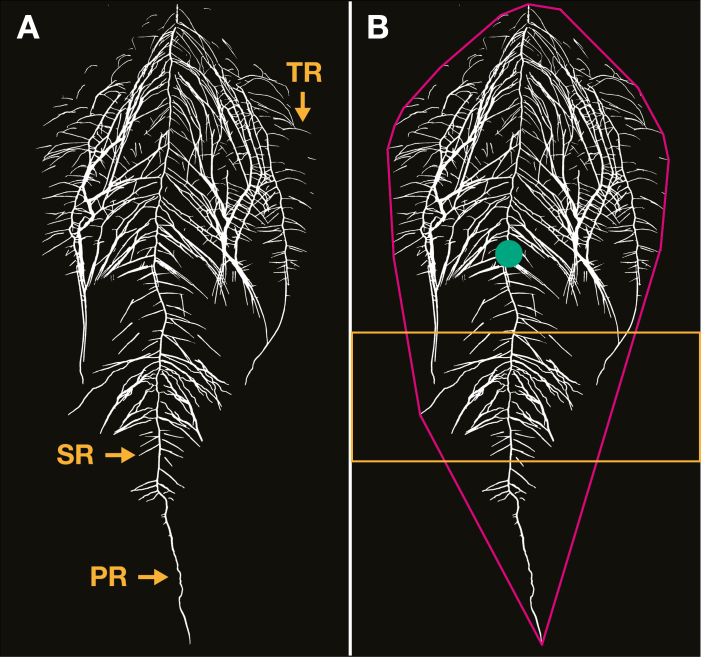Fig. 1.
Comparison of traditional and architectural root system analysis. (A) Traditional root system analyses prioritize hierarchical and quantitative relationships between root classes without consideration of their spatial distribution. Thus, the primary root (PR) gives rise to secondary roots (SRs), which in turn give rise to tertiary roots (TRs), and so forth. All roots apart from the PR are collectively termed lateral roots. Measurements usually include number, average, and total length for each root class, and sometimes parameters that refer to the whole root system such as total root length and area. (B) In contrast, architectural analysis does not emphasize root rank but prioritizes their distribution in space to determine their functional contribution to the acquisition of soil resources. Major RSA parameters that describe said shape are the convex hull (the area of the smallest polygon covering the whole root system when projected in 2D, which represents the area the roots are exploring) (magenta); the centroid (the centre of mass of the root system bounded by the convex hull) (green dot); vertical root density (length or area of roots in a given area or volume, which indicates the intensity of soil exploitation in that space) (an example of such a segment is shown between the yellow lines); and other parameters such as total length, area, and depth of the root system. The image corresponds to a chickpea root system captured by the system of Bontpart et al. (2019, Preprint).

